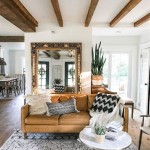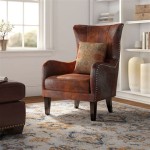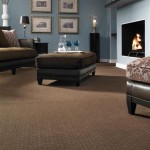Double Rugs in the Living Room: Layering for Style and Function
Layering rugs in the living room is a design technique gaining popularity for its ability to add depth, texture, and visual interest to a space. This practice, often referred to as "double rugging," involves placing a smaller rug atop a larger one, creating a layered effect. This article explores the benefits, considerations, and stylistic approaches to incorporating double rugs in the living room.
Defining the Space and Anchoring Furniture
A primary advantage of using double rugs is the ability to define specific areas within a larger living room. A large, neutral rug can serve as a base, grounding the entire space, while a smaller, patterned rug layered on top can delineate a seating area, creating a more intimate and cohesive feel. This helps anchor furniture groupings and visually separates different functional zones within an open-plan living space.
For example, a large jute rug can cover the majority of the living room floor, providing a neutral backdrop. A smaller, patterned Persian rug layered over the jute rug in the seating area can then define the space occupied by the sofa, armchairs, and coffee table, visually separating it from other areas, such as a dining area or a reading nook.
Adding Texture and Visual Interest
Double rugging offers an opportunity to introduce a variety of textures and patterns into the living room. Layering rugs with different pile heights, materials, and designs can create a rich and complex aesthetic. A textured rug, like a shag or a high-pile wool rug, can add warmth and coziness when layered over a flatweave rug, such as a jute or sisal rug.
Furthermore, layering rugs allows for the introduction of bolder patterns and colors without overwhelming the space. A vibrant, patterned rug can be used as a focal point when layered over a larger, more subdued rug, adding personality and visual interest without dominating the room's overall aesthetic. This technique allows for greater design flexibility and experimentation.
Protecting Flooring and Enhancing Acoustics
Beyond aesthetics, double rugging offers practical benefits. A larger rug serves as a protective layer for hardwood floors, preventing scratches and wear from furniture. Layering a smaller rug in high-traffic areas, such as under a coffee table or in front of a fireplace, provides additional protection and can extend the life of the underlying flooring.
Furthermore, rugs can significantly improve the acoustics of a room. Layering rugs adds another layer of sound absorption, reducing echoes and muffling noise. This is particularly beneficial in rooms with hard surfaces, such as hardwood or tile floors, and high ceilings, which can contribute to sound reverberation.
Choosing the Right Rug Combinations
Selecting the appropriate rug combinations is crucial for achieving a cohesive and balanced look. When layering rugs, consider the size, color, pattern, and texture of each rug. The larger rug should typically extend beyond the edges of the furniture it anchors, creating a visual frame. The smaller rug should be large enough to define the seating area, with the front legs of the furniture resting on it.
Color coordination is also essential. While contrasting colors and patterns can create a dynamic look, ensuring that the colors in both rugs complement each other is crucial for a harmonious aesthetic. Consider using a color wheel to identify complementary or analogous color schemes. Texture also plays a significant role. Mixing textures, such as a smooth flatweave with a plush shag, can create a visually appealing and tactilely interesting space.
Placement and Proportion
Proper placement and proportion are key to achieving a successful layered rug look. The smaller rug should be centered within the larger rug, creating a balanced and visually appealing composition. Avoid placing the smaller rug too close to the edge of the larger rug, which can create a disjointed and unbalanced look. The proportion of the two rugs is also important. The smaller rug should be significantly smaller than the larger rug, typically leaving a border of the larger rug visible around the edges.
In addition to centering the smaller rug, consider the traffic flow and furniture arrangement. The smaller rug should be placed in a way that complements the furniture layout and allows for easy movement within the space. For instance, in a seating area, the rug should be large enough to accommodate the front legs of the sofa and armchairs, creating a cohesive and defined space.

5 Reasons You Should Be Rug Layering Floorspace

5 Reasons You Should Be Rug Layering Floorspace

5 Reasons You Should Be Rug Layering Floorspace

5 Reasons You Should Be Rug Layering Floorspace

6 Easy Ways To Master The Layered Rug Look

Design Trend Layered Rugs Fhl Rockwall Interior

Double Rugs On Hardwood
Real Solution Double Up Your Rugs

Spotlight Rug Blog Defining Spaces Using Area Rugs To Separate A Room For Multipurpose Use Beacon Kc

Our New Double Layer Rugs In The Living Room








